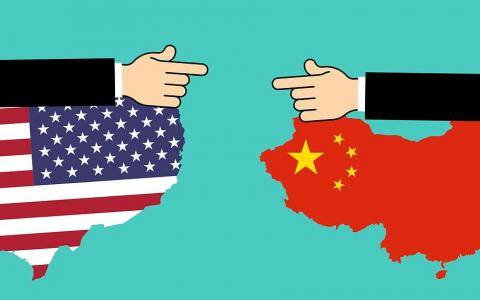
(Invesco) The American author Ernest Hemingway once said, “We have to get used to the idea that at the most important crossroads in our life, there are no signs.” That seems to be applicable to the world’s two largest economies. Both the US and China are at crossroads, with market participants and spectators looking for data that might signal where these economies are headed from here — and, of course, what the investment implications may be. And that data can be conflicting at times, which is adding to confusion.
China’s crossroads: Can the economic rebound continue?
Some are starting to wonder if the Chinese economy can continue to rebound, given recent data indicating that the re-opening boom seems to be stalling. July retail sales disappointed relative to expectations, rising just 2.7% year over year — which was actually a decline in the pace of growth from June’s numbers. Fixed asset investment also slowed. July industrial production in China grew by 3.8% year over year — which was well below consensus expectations of 4.6% and also slightly lower than June’s industrial production reading of 3.9% year over year. While July’s data was disappointing (as was other recent economic data), it’s worth noting that a slowing expansion is still an expansion.
More importantly, I think it’s important to stress that economic data might not be the only signs we should follow. We should also be looking at policy — both monetary and fiscal — and its potential to impact the direction of economies and markets. For example, the China Association of Automobile Manufacturers reported that July auto sales in China rose 29.7% year over year. We have now seen car sales rise for two consecutive months, helped by supportive government policy, including a purchase tax cut. What the auto data tells me is that, when policymakers utilize policy tools, they can have a significant positive impact on the economy.
In terms of monetary policy, the People’s Bank of China (PBoC) has already responded to recent weaker economic data with a surprise interest rate cut for the first time since January. And the PBoC can continue to cut if it believes it is needed to support the economic recovery.
So far, policymakers have avoided broad top-down support for the property market due to debt leverage concerns, and Chinese stocks have given back recent gains largely due to property market woes. But I believe they have the tools to prevent a hard landing if needed. I find investors are overly pessimistic about Chinese stocks — which means there is the potential for positive surprise.
In short, I believe the economic rebound will continue this year, and I still expect Chinese equities to claw back some of the losses from the first half of 2022, given the potential for policy support — both fiscal and monetary — if and when needed.
The US crossroads: Can the economy avoid a full-blown recession?
The US stock market is also at a crossroads, with so many asset owners asking where it will go from here. Interestingly, the majority seems to believe that this is an unsustainable rally (a bull rally within a bear market). If we look at this year’s S&P 500 peak-to-trough drop (from Jan. 3 to June 16), its return was slightly more than -20% (with a drop of 20% or more the definition of a bear market). Given that many have questioned the rebound since the trough, we looked at historical data for bear markets since 1957 and found that whether rebounds from bear markets were sustainable has tended to be determined by whether there was an actual recession or not.
Because of the inflation picture, I believe the chances of avoiding a recession have improved for the US economy (and by “actual recession,” I mean the admittedly somewhat ambiguous National Bureau of Economic Research definition of recession: a significant decline in economic activity that is spread across the economy and that lasts more than a few months). Supply chain pressures appear to be easing and commodities are off their highs. If you are a monetarist, you likely believe inflation will moderate substantially given the monetary deceleration that has occurred. If you subscribe to the Phillips curve, you probably believe the future of inflation depends on a loosening of the labor market; that appears to be happening as job openings fall and some layoffs are announced. In other words, it seems inflation has peaked and, while still unpleasantly high, is moderating.
Ultimately, whether the economy goes into recession and whether the stock market rally fizzles all depends on monetary policy going forward, in my view. The Federal Reserve’s preferred measure of inflation is moderating, and initial jobless claims are trending higher. And so given the Fed’s data dependency, I anticipate it will make a pivot to a less hawkish tightening path at some point in the coming months. I believe tightening will continue — but just not as aggressively as markets expect. And I think that should be enough for the US stock market rally to be sustained.
Looking ahead for signs
Looking ahead, we will want to be laser focused on the data the Fed cares about most — especially inflation and inflation expectations. And we’ll look for clues in the upcoming July Federal Open Market Committee meeting minutes for signs of what might cause the Fed to pivot to a less hawkish stance. We will also want to pay attention to new policy initiatives from China as well, especially around the property market.
That’s because I believe the near-term direction of economies and markets will largely be dictated by policy. However, I’m the first to admit that we have to have humility in reading and interpreting the signs we see. As former AOL CEO Steve Case once said, “There are no road signs to help navigate. And in fact, no one has yet determined which side of the road we’re supposed to be on.”



